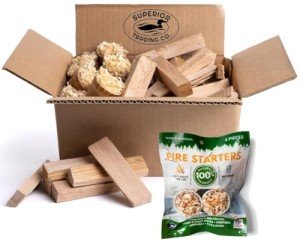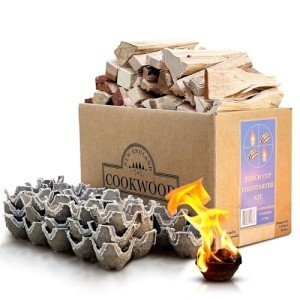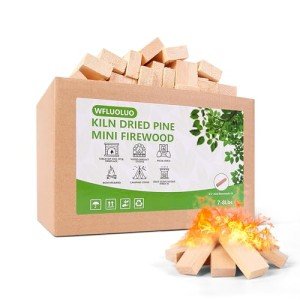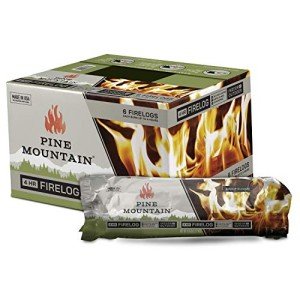The allure of outdoor cooking and fire pits has grown exponentially in recent years. As more individuals seek to create inviting outdoor spaces, products like the Solo Stove have gained prominence. Known for their innovative design and efficient burning patterns, Solo Stoves provide not just heat but an experience. However, the secret to an enjoyable fire lies in the materials used. Aged firewood and quality fire starters are essential components in maximizing the potential of your Solo Stove. This guide will delve into the importance of using aged firewood and the kind of starters that work best for Solo Stoves.
Understanding Aged Firewood
Aged firewood refers to firewood that has been seasoned for a period, typically six months to a year, allowing moisture content to decrease significantly. Freshly cut wood, or "green wood," can contain more than 50% moisture, making it challenging to ignite and maintain a steady burn. Aged firewood, on the other hand, usually has a moisture content below 20%, providing several advantages:
-
Easier Ignition: Aged firewood ignites more readily compared to green wood. This quality is crucial for outdoor cooking, where a quick start can be essential for meal preparation.
-
Higher Heat Output: As the moisture content decreases, the heat output increases. Aged firewood produces more heat, making it ideal for grilling and heating.
-
Less Smoke: Aged wood burns more cleanly than green wood, resulting in less smoke. This feature is particularly beneficial in urban areas or during gatherings, where smoke can be a nuisance.
-
Longer Burn Time: Aged firewood provides a more consistent and longer-lasting burn, offering an enjoyable experience during outdoor activities.
Choosing the Right Types of Aged Firewood
Not all firewood is created equally. The type of wood influences the burn quality, aroma, and experience. When selecting aged firewood for Solo Stoves, consider the following types:
-
Hardwoods: Species such as oak, hickory, and maple stand out as excellent choices. They tend to burn longer and hotter, making them ideal for cooking and warmth.
-
Softwoods: Woods like pine and cedar ignite quickly and produce a pleasant fragrance but tend to burn faster and generate more creosote, which can lead to chimney build-up.
-
Fruitwoods: Cherry, apple, and peach add a unique flavor to food when used in grilling or smoking. They provide a balanced burn and pleasant aroma.
Ideal Size for Firewood
When preparing to use a Solo Stove, the size of the firewood is also crucial:
-
Smaller Logs: Cut logs into small pieces around 3-6 inches in diameter. This size facilitates quicker ignition and better airflow.
-
Kindling: Use thin branches or twigs as kindling to help ignite the larger logs. Dry sticks work best and should be around 1 inch in diameter.
The Role of Fire Starters
Fire starters are another crucial component in constructing a successful fire in your Solo Stove. They ease the process of starting a fire, especially when using aged firewood. Here are some popular types of fire starters:
-
Natural Fire Starters: Made from eco-friendly materials, these starters are ideal for those wanting to avoid chemicals. They can be derived from wood shavings, wax, and natural fibers, which make them safe and effective.
-
Fire Starter Cubes: These compressed blocks are designed to ignite quickly and burn for an extended period. They are portable and easy to use, making them great for camping trips.
-
Liquid Accelerants: Although effective, they can be hazardous if not used correctly. It is advisable to use them sparingly and ensure proper ventilation.
-
Homemade Starters: Individuals can create fire starters using household materials like egg cartons filled with dryer lint or cotton balls dipped in wax. They are cost-effective and environmentally friendly options.
How to Use Fire Starters Effectively
- Ensure your Solo Stove is in a clear, open environment before lighting.
- Place crumpled paper or small amount of kindling at the base.
- Add aged firewood in a teepee formation around the kindling for optimal airflow.
- Light the starter and watch it ignite the kindling, which in turn lights the aged firewood.
Frequently Asked Questions (FAQs)
1. How long should firewood be seasoned before use?
Ages of 6 months to 1 year are recommended for proper seasoning, which significantly reduces moisture content and enhances burning qualities.
2. What is the maximum moisture content for aged firewood?
Generally, aged firewood should have a moisture content below 20%. This level ensures better combustion and heat output.
3. Can I use treated wood in my Solo Stove?
No, treated wood contains chemicals that can release harmful toxins when burned. It is essential to use untreated, natural wood for safety reasons.
4. How can I store my firewood to keep it seasoned?
Store firewood in a dry, well-ventilated area, elevated off the ground to prevent moisture absorption. Cover the top with a tarp while allowing the sides to remain open for airflow.
5. What safety measures should I consider when using a Solo Stove?
Ensure you place the stove on a non-flammable surface, keep a safe distance from overhanging branches, and have a fire extinguisher or bucket of water nearby in case of emergencies.
Using aged firewood and the right fire starters can transform the experience of utilizing a Solo Stove. These elements work together to create a more enjoyable, efficient, and flavorful outdoor cooking or gathering experience. By understanding the types of wood to use, the ideal sizes for firewood, and the best starters, enthusiasts can ensure that every outdoor venture is met with roaring success. As outdoor cooking continues to capture the hearts of many, knowledge about these essentials only enhances the experience, fostering a deeper connection with nature and the art of preparing food outdoors.






